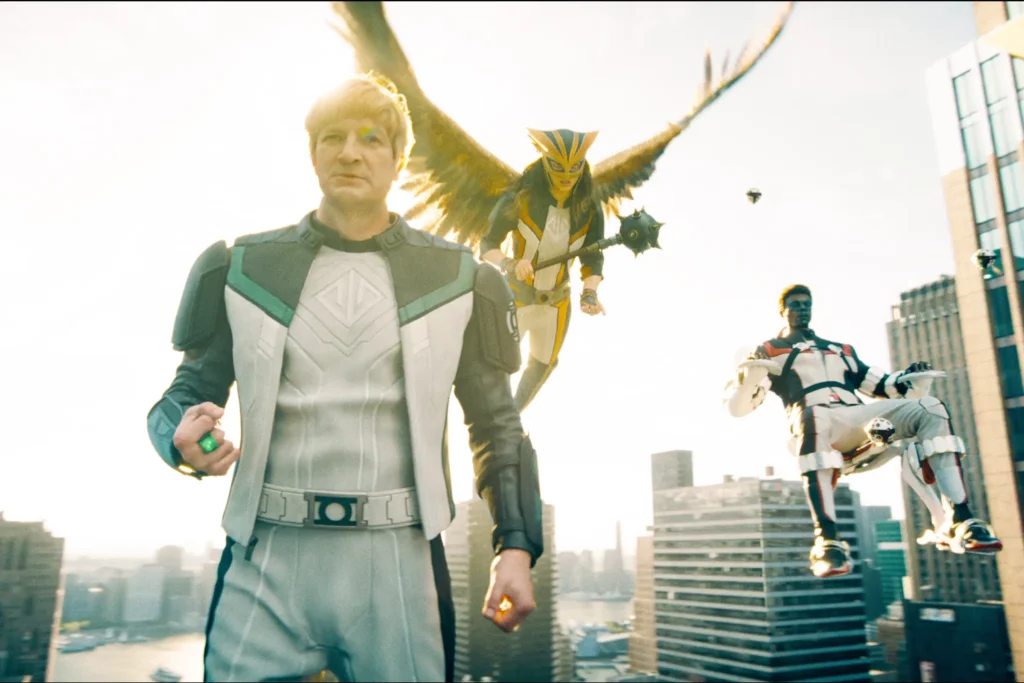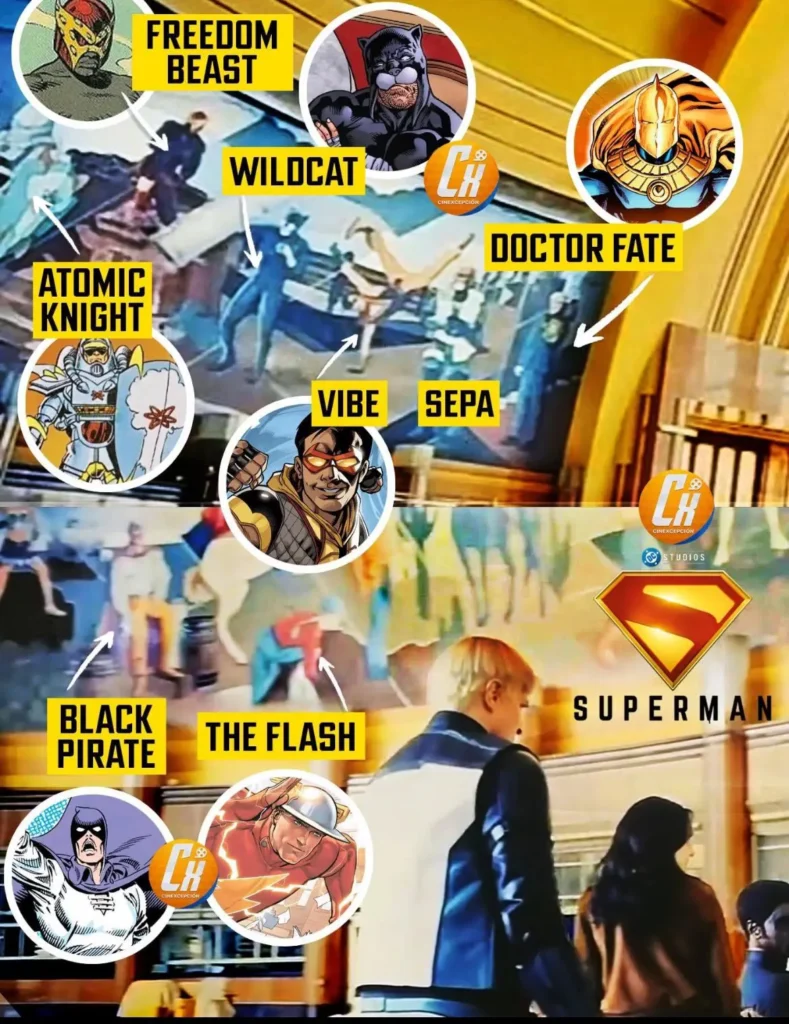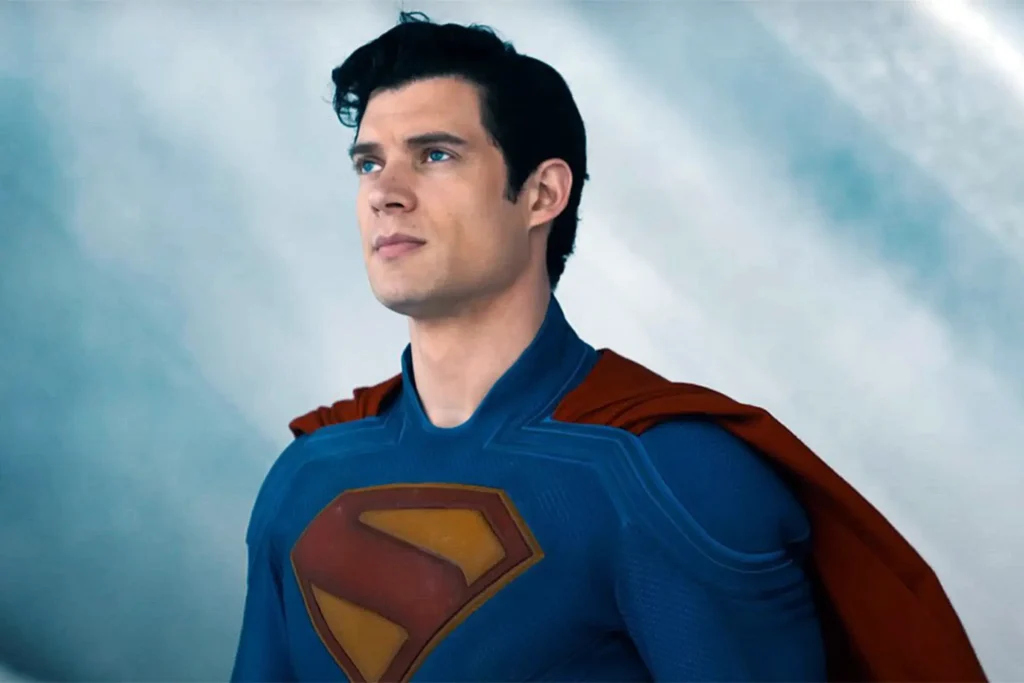James Gunn has launched an entirely new cinematic universe with his Superman movie, but the most remarkable aspect of this new DC Universe extends far beyond what appears on screen. Through careful analysis of the first two DCU projects—Superman and Creature Commandos—a complex and expansive universe emerges, one that operates on a fundamentally different philosophy than previous superhero franchises.
Understanding the DCEU vs DCU Transition
The distinction between the old DC Extended Universe and James Gunn’s new DC Universe requires careful clarification. Any project releasing after Creature Commandos belongs to the new DCU, while previous DC live-action projects remain part of the old universe. However, several exceptions exist.
Projects like Peacemaker, The Suicide Squad, and similar James Gunn creations will transition to the new universe through soft reboots. These characters retain their core experiences and development, but certain events undergo modification. The Peacemaker appearing in future DCU content remains canon, though specific elements from previous seasons—such as the Justice League appearance—will not carry forward. Similarly, The Suicide Squad maintains canonical elements like Rick Flag Jr.’s death, as referenced through his father’s dialogue in Creature Commandos.
This transition strategy allows Gunn to preserve successful character work while establishing narrative consistency. The old universe, which began with Man of Steel and concluded with Aquaman and the Lost Kingdom, gives way to a more integrated approach. Meanwhile, Matt Reeves’ universe, encompassing The Batman and The Penguin, operates as separate “Elseworlds” content outside the main DCU continuity.
The Revolutionary 300-Year Meta-Human History
One of the most significant revelations in the new Superman movie establishes that meta-humans—DC’s term for super-powered beings—have existed on Earth for 300 years. This single detail fundamentally transforms the universe’s foundation, creating extensive historical depth that previous iterations lacked.
This extended timeline suggests a rich, unexplored history of superhuman activity preceding the modern era. Rather than introducing superpowers as recent phenomena, the DCU presents them as integral to human civilization for centuries. This approach enables more sophisticated storytelling possibilities and provides logical foundations for established superhero dynasties and ancient conflicts.
Evidence of Established Heroes Throughout the Universe
Wonder Woman’s World Already Exists
Creature Commandos provides crucial evidence supporting this established universe approach. The appearance of Circe, one of Wonder Woman’s primary antagonists, confirms that the Amazons and Themyscira already exist within this continuity. While Paradise Lost will eventually showcase this mythology properly, Circe’s presence strongly suggests Diana Prince operates somewhere within this world, simply awaiting her proper introduction.
Batman’s Gotham Operations
A brief Batman appearance in Creature Commandos confirms the Dark Knight’s active presence in Gotham City. James Gunn’s approach to Batman emphasizes the Bat Family’s importance, suggesting characters like Damian Wayne, Dick Grayson, and Jason Todd may already exist within this universe. When Batman: Brave and the Bold arrives, these characters will likely appear as established figures rather than new introductions.
The “Already There” Philosophy: A Paradigm Shift
James Gunn’s DCU operates on a revolutionary “already there” philosophy that distinguishes it from previous superhero franchises. Unlike the Marvel Cinematic Universe, which methodically introduced each hero through individual origin stories, the DCU presents a world where superheroes already exist and operate—audiences simply haven’t seen them yet.
This approach treats the DC Universe as a living ecosystem where heroes and villains conduct ongoing activities regardless of audience awareness. Information is revealed on a need-to-know basis: when a character becomes relevant to a specific story, their existence and background are acknowledged. This creates a sense of organic world-building that feels more authentic than artificial character introductions.

Guy Gardner exemplifies this philosophy perfectly. His casual references to the Green Lantern Corps and the Guardians of Oa acknowledge these crucial DC elements without requiring extensive exposition. His Green Lantern ring validates their existence, while the upcoming Lanterns series will provide detailed exploration when narratively appropriate.
Decoding the Justice Society Mural
A Window into Established Heroes
The Hall of Justice scenes in Superman feature a crucial Easter egg: a detailed mural depicting the Justice Society of America. This mural serves as visual confirmation of the “already there” philosophy, showcasing numerous heroes who exist within this universe but await their moment of relevance.
The Justice Society of America differs significantly from the Justice League of America. In DC’s Golden Age and pre-Crisis continuity, the JSA operated on Earth-2 while the Justice League protected Earth-1. Modern continuity places both teams on the same Earth, with the JSA typically representing an older generation of heroes. The mural’s presence suggests the Justice Society formed before current events, establishing heroic traditions that predate Superman’s public emergence.
Character Analysis from the Mural
Confirmed and Likely Characters:
Wildcat (Ted Grant): The most clearly identifiable figure on the mural, Wildcat represents a non-powered vigilante with exceptional fighting skills. A former boxer who was framed and turned to vigilantism, Ted Grant embodies the street-level heroism that grounds the DCU’s more fantastical elements.
Jay Garrick (The Flash): The Justice Society’s Flash, distinguished by his distinctive winged helmet, Jay Garrick holds crucial importance in DC’s Crisis on Infinite Earths continuity. His presence suggests speed force mythology already exists within this universe.
Atomic Knight: A futuristic hero from DC’s pre-Crisis era, featuring nuclear-powered technology that connects to the universe’s broader science fiction elements.

Freedom Beast: An African superhero with animal fusion and control abilities, representing the DCU’s international scope and diverse power sets.
Vibe (Cisco Ramon): Possessing interdimensional portal abilities, Vibe’s inclusion hints at multiverse concepts that may become relevant in future storylines.
Gunfire: A character with explosive energy manipulation abilities similar to Marvel’s Gambit, demonstrating the universe’s variety of power types.
Additional Figures: The mural contains numerous other heroes, including possible appearances by Amethyst, Shining Knight, Vigilante, and Doctor Fate. Doctor Fate’s presence raises questions about whether Pierce Brosnan’s portrayal might carry forward through the soft reboot approach.
Future Conflicts and Storyline Implications
Meta-Human Civil Conflicts
The established presence of numerous meta-humans creates narrative possibilities focused on internal conflicts rather than external threats. With hundreds of super-powered individuals operating for centuries, ideological divisions become inevitable. Different heroes will approach justice, law enforcement, and public safety from conflicting perspectives.
Some heroes will support working within legal systems, while others prefer direct action outside official channels. Public opinion regarding meta-human activity will vary, potentially creating scenarios similar to The Boys’ exploration of superhero accountability. Superman will likely find himself mediating these conflicts, potentially leading to Civil War-style divisions within the superhero community.
Vandal Savage as a Central Antagonist
Hawkgirl’s presence in Creature Commandos connects to larger narrative possibilities involving Vandal Savage, an immortal villain with extensive history opposing Hawkman and Hawkgirl. Vandal Savage has never received proper live-action treatment, making him an ideal choice for the Gods and Monsters chapter. His immortality and strategic mind make him perfectly suited to exploit meta-human divisions and orchestrate conflicts between heroic factions.
The Authority and Future Directions
James Gunn previously announced The Authority movie before delaying it for strategic reasons. The Authority represents anti-heroic characters who often conflict with traditional superhero teams like the Justice League. Their eventual introduction could serve as the climactic conflict for Chapter One: Gods and Monsters, potentially rebranded as Justice League vs. The Authority.
This approach focuses on domestic, internal conflicts rather than universal threats, providing fresh narrative territory after years of cosmic-scale MCU storylines. Earth-based conflicts allow for more intimate character development and political complexity.
Kingdom Come Influences and Thematic Direction
James Gunn has referenced Kingdom Come as a major influence, and the comic’s themes align perfectly with the DCU’s established direction. Kingdom Come explores a world where aging heroes face younger, more violent meta-humans who reject traditional heroic codes. An emotional crisis forces Superman into retirement, allowing lawless meta-humans to dominate society until Wonder Woman convinces him to return.
The political tensions visible in Superman suggest similar conflicts will intensify throughout future DCU projects. The meta-human registration and regulation issues that Kingdom Come explores provide rich material for multiple films and series.
Why This Approach Represents Superior World-Building
Authentic Universe Creation
The “already there” philosophy creates authentic universe building that feels lived-in rather than artificially constructed. Heroes exist because heroes should exist in a world with 300 years of meta-human history. Their presence doesn’t require elaborate justification—it represents natural evolution.
Narrative Efficiency
This approach enables efficient storytelling by avoiding repetitive origin stories. Audiences can immediately engage with complex character relationships and established histories without lengthy exposition. New characters can appear with minimal setup because the universe’s foundation supports their existence.
Fresh Superhero Content
After decades of cosmic threats and multiverse conflicts, Earth-based political and social conflicts offer refreshing alternatives. Internal superhero conflicts provide opportunities for character development and moral complexity that universal threats often overshadow.
The Expanding Universe Ahead
Future DCU projects will continue revealing established elements when narratively appropriate. Peacemaker Season 2, Lanterns, Supergirl: Woman of Tomorrow, Clayface, and Batman: Brave and the Bold will each contribute pieces to this larger puzzle. Additional unannounced projects will likely fill gaps and introduce new corners of this established universe.
The Green Lantern Corps mythology awaits exploration in Lanterns, while Supergirl’s comic-accurate portrayal will showcase red sun planets and cosmic adventure. Each project will add depth to the “already there” foundation while maintaining narrative focus on relevant characters and conflicts.
Long-Term Possibilities and Future Sagas
Once the domestic conflict saga concludes, numerous possibilities await exploration. Green Lantern Corps cosmic conflicts, Blackest Night storylines, Darkseid’s eventual arrival, and multiverse exploration all represent potential future directions. The strong foundation established through the “already there” philosophy provides flexibility for any narrative direction while maintaining universe consistency.
The DCU’s approach prioritizes character development and political complexity over spectacle-driven plotting. This strategy positions the franchise for sustained success by creating authentic emotional investment in character relationships and conflicts. By the time cosmic threats arrive, audiences will care deeply about the heroes facing them. James Gunn’s revolutionary approach to universe building represents the evolution of superhero storytelling. The “already there” philosophy creates depth, authenticity, and narrative efficiency that previous franchises struggled to achieve. As this universe continues expanding, it promises to deliver fresh perspectives on familiar heroes while honoring the rich complexity that makes DC Comics enduringly popular.

